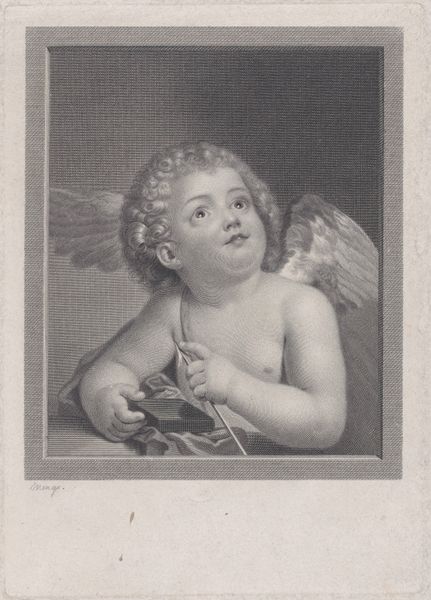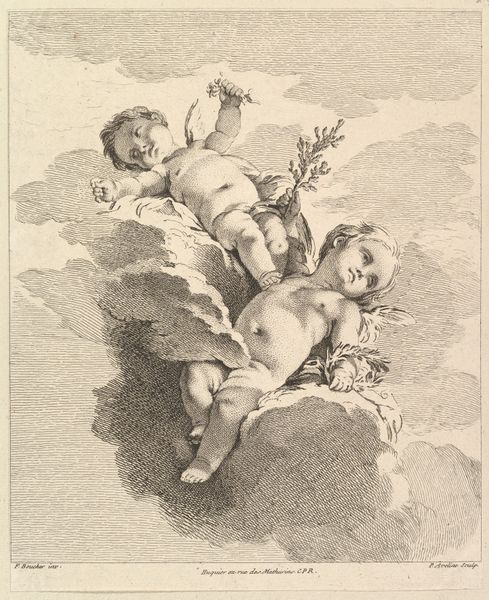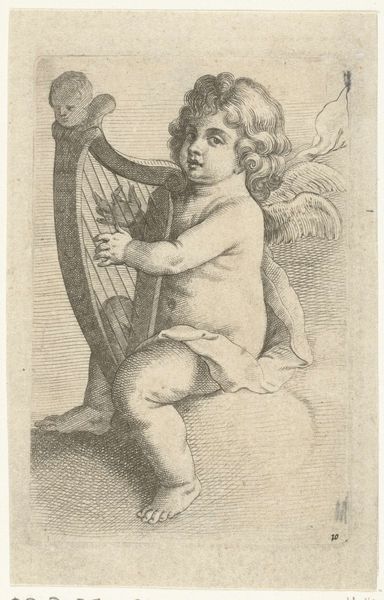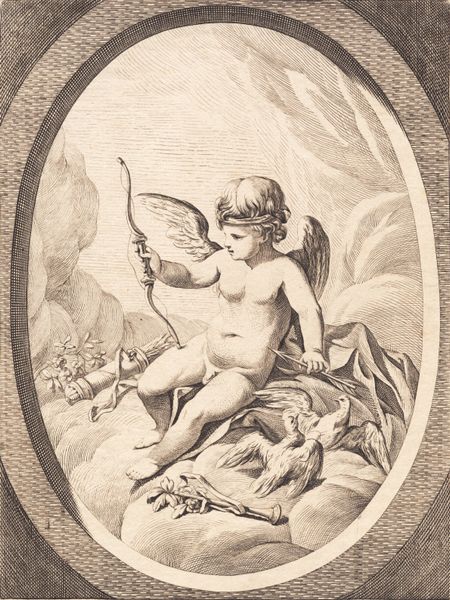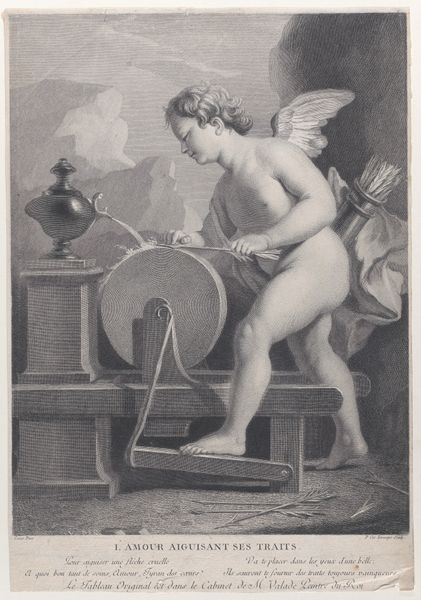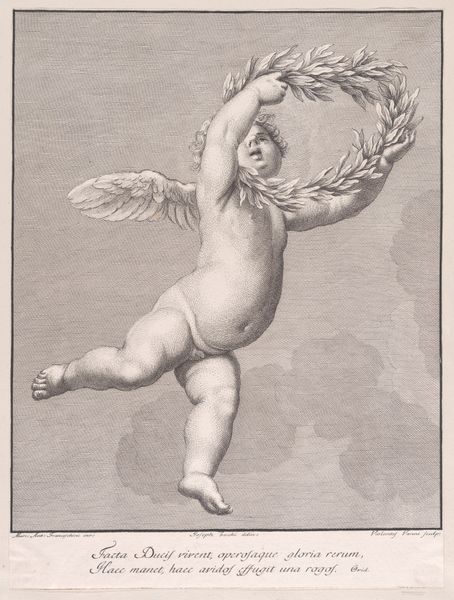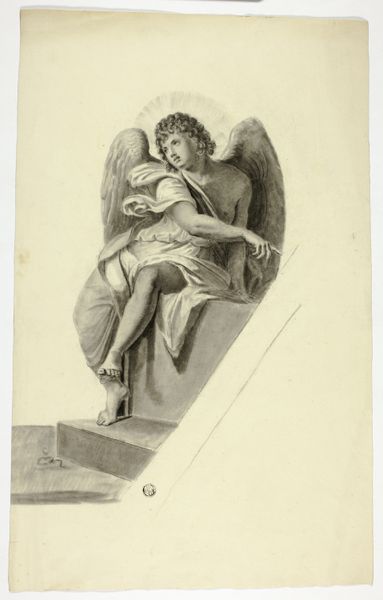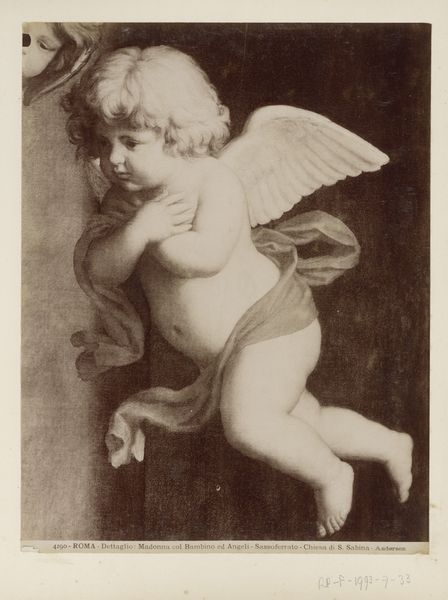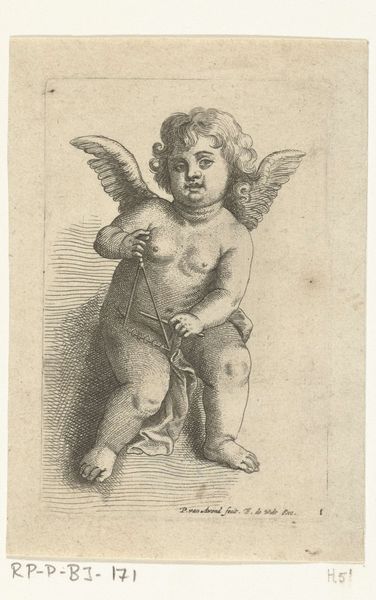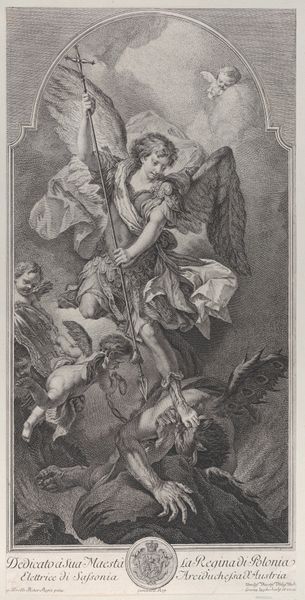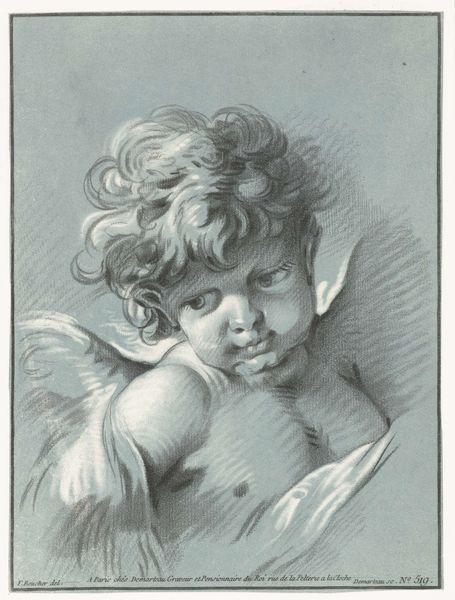
Dimensions: Sheet (Trimmed): 11 5/8 × 6 7/8 in. (29.6 × 17.5 cm)
Copyright: Public Domain
Curator: The delicacy is striking, isn't it? The artwork is "Putto with a yoke," an engraving made in 1774. Editor: Yes, it does have a certain lightness. At first glance, I’m drawn to the image’s melancholic atmosphere; there is this cherubic figure, wings and all, burdened by this heavy yoke. Curator: Made all the more weighty, I would argue, by Vanni’s technique. Note the careful layering of the lines to suggest texture and depth in both the figure of the putto and the cloud beneath its feet, it's such skillful manipulation of the medium of engraving, and contrasts greatly with the subject’s allegorical burdens. Editor: Precisely. I see a clear commentary on the loss of innocence or, perhaps, the constraints placed upon the vulnerable by societal structures. A yoke is an instrument of control, of labor, and to see it imposed on a child evokes a sense of injustice. This aligns, doesn't it, with Enlightenment ideals regarding the rights of man? Curator: Certainly, such debates would have been topical in 1774, the relationship between production, power, and individual agency. We mustn't overlook the technical processes behind such an image. The lines were likely engraved by hand, which demands a high level of artisanship. Consider the laborious process required to bring such images to distribution; these details ground our viewing. Editor: I’d add the context that artists like Vanni often worked for wealthier patrons. What meanings might have been circulating within the aristocracy? Is there perhaps also a lament for their own potential burdens of power, a symbolic self-reflection about the perils of nobility, embedded here through the winged cupid. Curator: Intriguing... but might not our focus be better suited considering its destination in the market? Given the era and the proliferation of prints, could its purpose simply be ornamental, meant to satisfy emerging middle class consumers’ aesthetic interests? After all, a winged baby may merely signal class affiliation at a basic level. Editor: Possibly, though I'm still inclined to view its social messaging and purpose through our current moment. Despite being separated from its era of creation by over two centuries, this image persists, calling for critical and urgent reassessments. Curator: An urgent re-evaluation spurred by craft and care, where careful, demanding artisanal approaches provide the tools and structure to address today's urgencies.
Comments
No comments
Be the first to comment and join the conversation on the ultimate creative platform.

